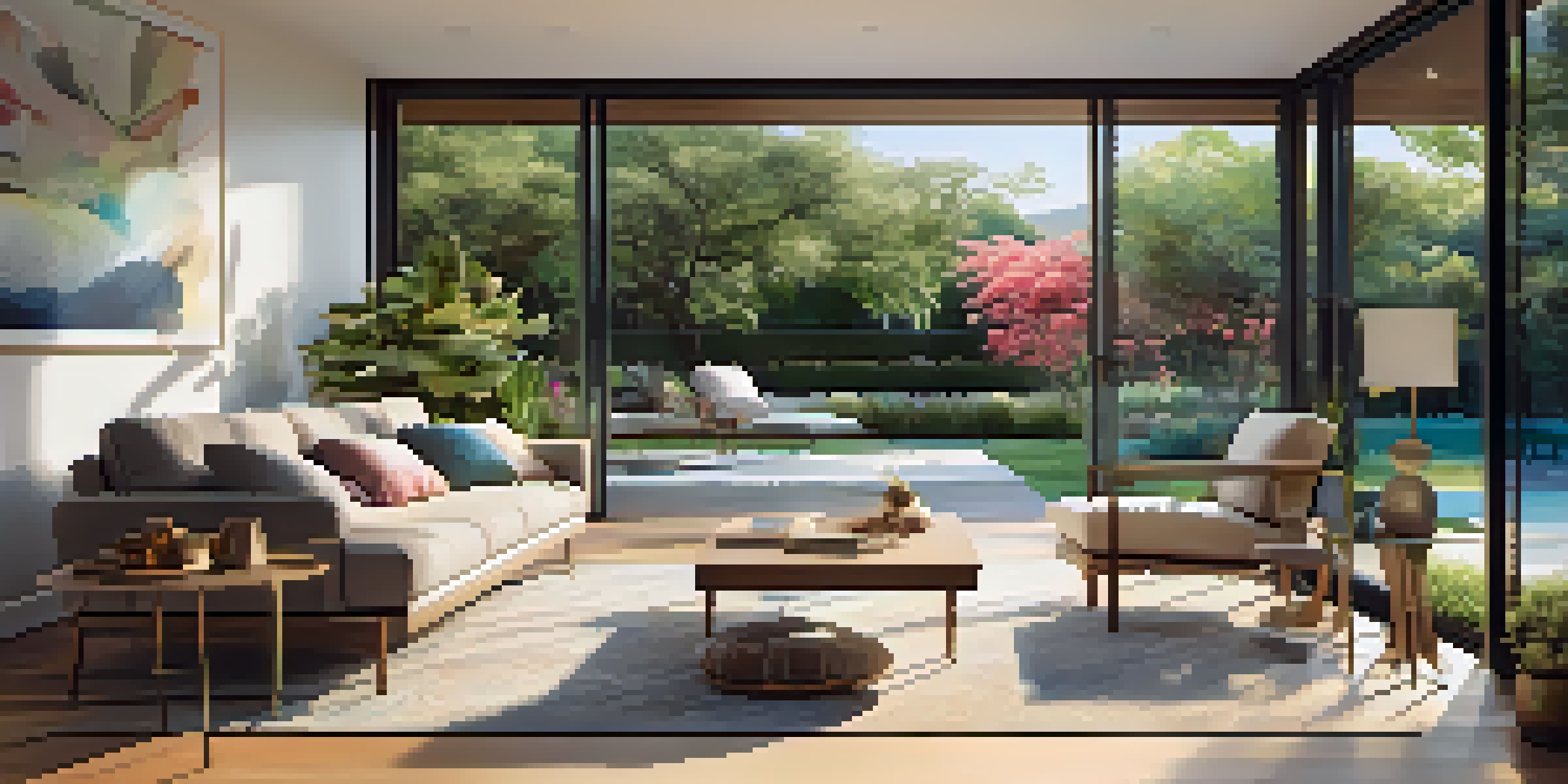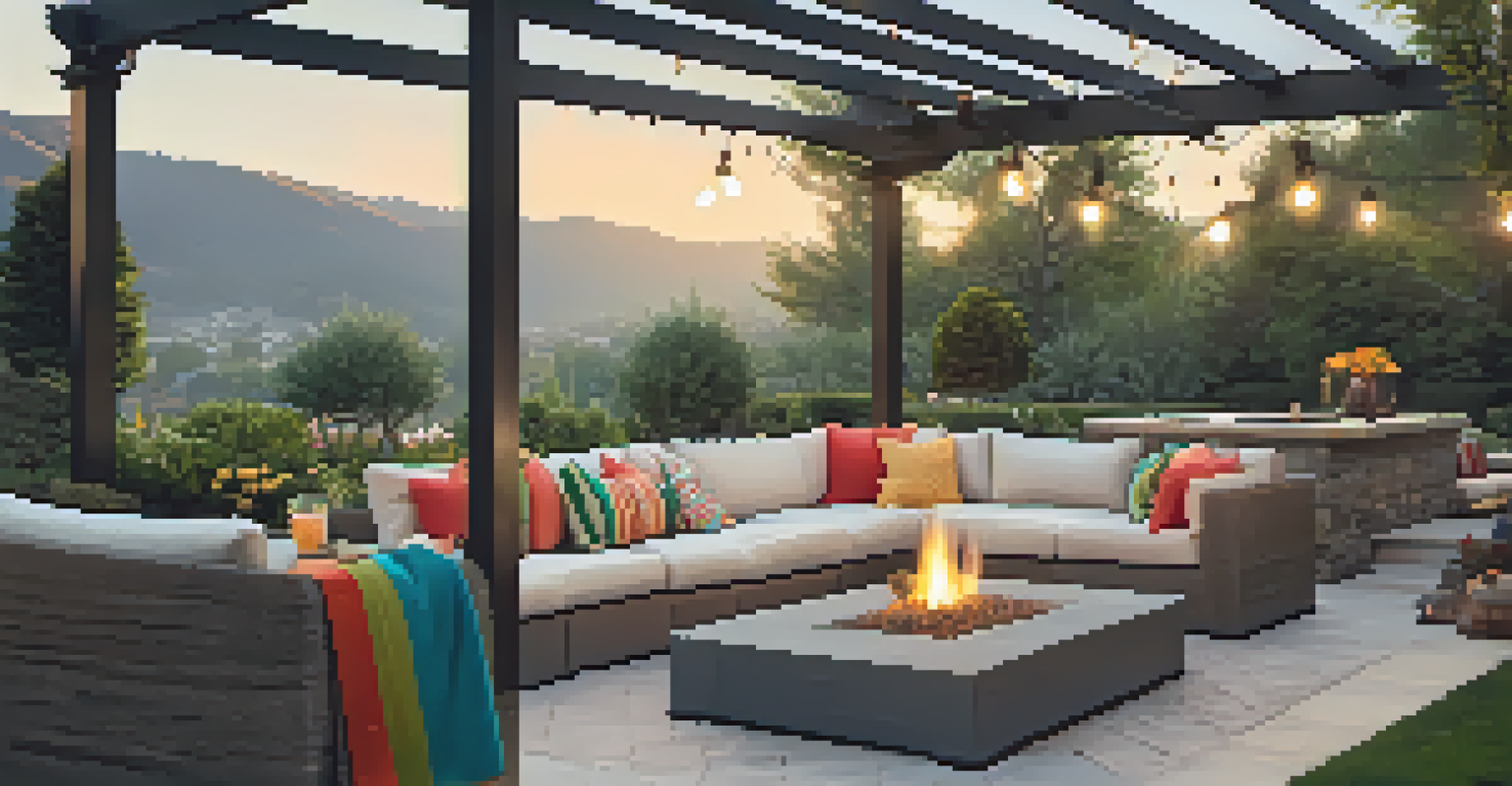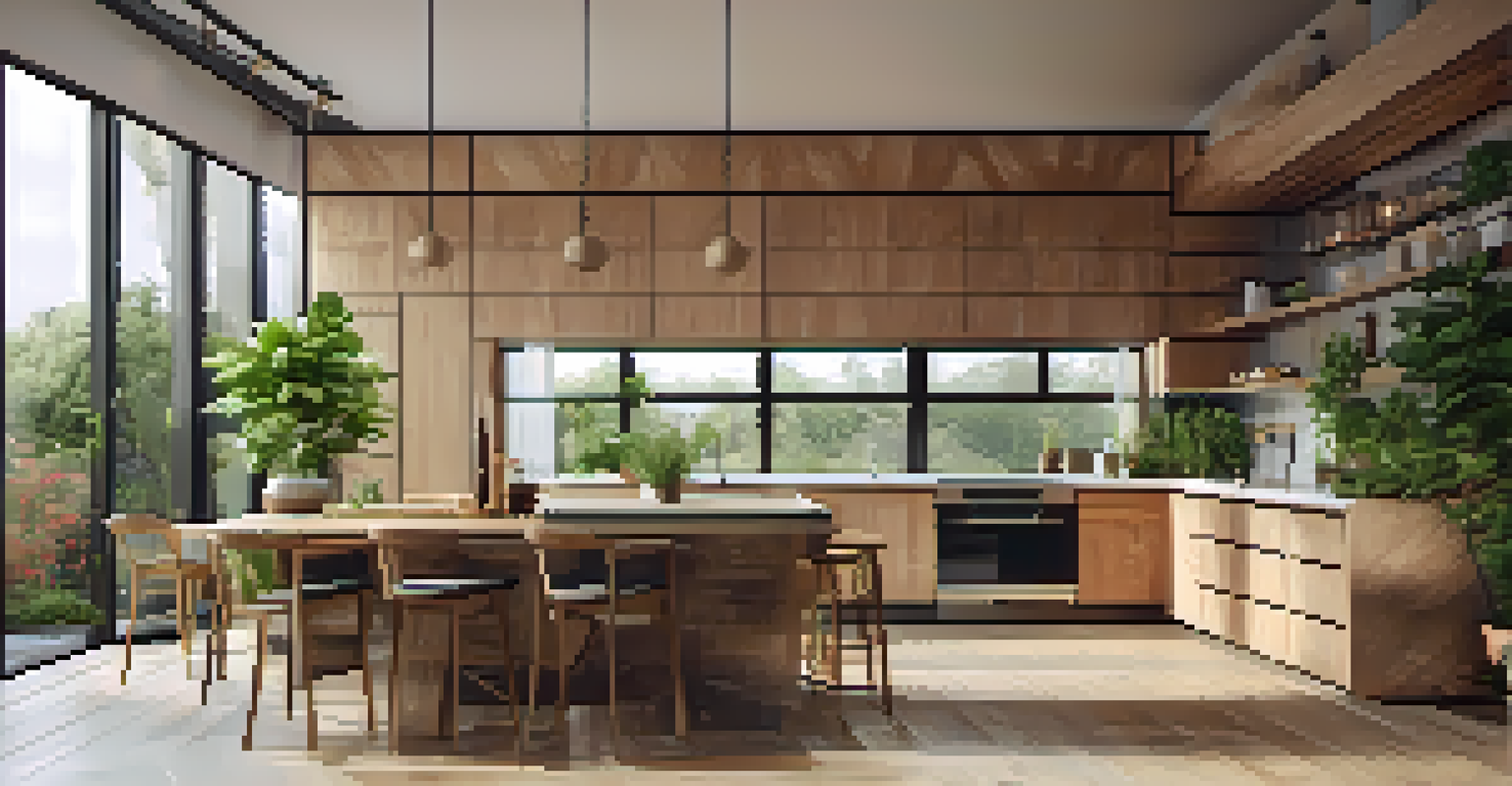Creating a Seamless Indoor-Outdoor Flow in Open Spaces

Understanding the Concept of Indoor-Outdoor Flow
Creating a seamless indoor-outdoor flow begins with understanding how these spaces can coexist harmoniously. This concept revolves around breaking down barriers between indoor environments and the great outdoors, allowing for a more natural transition. Imagine stepping from your cozy living room right into a vibrant garden; that’s the essence of this design philosophy.
Nature does not hurry, yet everything is accomplished.
Moreover, the idea is not just about physical space but also about bringing in the elements of nature into your home. This can be achieved through large windows, open doors, or even strategically placed plants that blur the lines between inside and outside. It’s about creating a sense of continuity that makes your home feel more expansive and connected to nature.
Ultimately, fostering this flow can enhance your lifestyle, providing you with a more enjoyable and serene living experience. Think of how refreshing it feels to breathe in fresh air as you sip your morning coffee, with the beauty of the outdoors right at your fingertips.
Choosing the Right Materials for a Cohesive Look
The choice of materials plays a crucial role in achieving that seamless connection between your indoor and outdoor spaces. Opting for similar flooring materials both inside and outside can create a visual continuity that ties everything together. For example, using natural stone or wood can extend that warm, organic feel from your living room to your patio.

Moreover, consider the colors and textures of your furnishings and decor. Neutral palettes can create a calm, unified look, while pops of color can be introduced through outdoor cushions or indoor plants. This cohesion not only looks appealing but also invites a sense of tranquility into your environment.
Lastly, remember that durability matters, especially for outdoor materials. Choosing weather-resistant options ensures that your design remains not only beautiful but also functional over time, making your investment worthwhile.
Maximizing Natural Light for Open Spaces
Natural light is one of the most effective tools in creating a seamless flow between indoor and outdoor areas. Large windows, sliding glass doors, or even skylights can flood your space with sunlight, enhancing both the ambiance and energy efficiency. This light draws the eye outside, making the transition feel more fluid.
The best thing about the outdoors is that it connects us to nature and brings a sense of peace and tranquility.
Additionally, consider using sheer curtains or blinds that can be pulled back during the day to allow maximum light and visibility. This way, you can enjoy the beauty of your outdoor space while maintaining privacy when needed. The right window treatments can truly elevate the indoor-outdoor experience.
Incorporating reflective surfaces, like mirrors or glass decor, can also amplify the natural light in your space. This not only brightens up the area but creates a feeling of openness, making your home feel more expansive and welcoming.
Incorporating Plants for a Lush Atmosphere
Plants are a fantastic way to enhance the indoor-outdoor flow, bringing life and vibrancy to both areas. By strategically placing indoor plants near windows or doorways, you can create a visual link to your outdoor garden. This connection fosters a sense of peace and harmony within your home.
Furthermore, consider using plants that thrive in both environments. For instance, herbs like basil or mint can be grown in pots both indoors and outdoors, providing a functional and aesthetic benefit. This not only beautifies your space but also allows you to enjoy fresh ingredients right at your fingertips.
To take it a step further, vertical gardens or living walls can be an impressive feature in open spaces. They not only serve as stunning focal points but also help purify the air, creating a healthier living environment.
Creating Designated Gathering Areas
Designated gathering areas are essential in promoting social interaction and enhancing the indoor-outdoor flow. Think about creating cozy nooks or patios where family and friends can gather, share a meal, or simply enjoy each other’s company. This encourages a lifestyle that embraces nature and community.
Consider using outdoor furniture that mimics the comfort of your indoor seating. Cushions, rugs, and tables can create a seamless look that encourages people to move between spaces without feeling out of place. A well-designed outdoor area can serve as an extension of your living room.
Additionally, incorporating features like fire pits or outdoor kitchens can transform your backyard into an entertainment hub. These elements not only enhance the aesthetics but also invite more gatherings, making your indoor-outdoor flow a natural part of your lifestyle.
Utilizing Architectural Elements for Flow
Architectural elements can significantly enhance the seamless transition between indoor and outdoor spaces. Features like archways, pergolas, or even large overhangs can create a sense of continuity while providing shelter and comfort. These structural elements guide the flow and invite exploration.
Consider using sliding or folding doors that can be opened wide to connect your living area with the outdoors. This design choice allows for a flexible space that can adapt to different occasions, whether it’s a quiet evening or a lively gathering. It’s all about how you design the boundaries, or lack thereof.
Moreover, integrating built-in seating or planters can create functional spaces that encourage movement and interaction. These elements contribute to an inviting atmosphere where the indoors and outdoors feel like one cohesive experience.
Emphasizing a Consistent Color Palette
A consistent color palette is crucial in achieving a harmonious indoor-outdoor flow. By choosing colors that complement both your indoor decor and outdoor landscaping, you can create a visually appealing transition. For example, earthy tones can evoke a sense of calm and connection to nature.
Consider using similar hues for your furniture, accessories, and even plant choices. This consistency can enhance the overall aesthetic, making both spaces feel intertwined. It’s like painting a picture where every element works together to create a beautiful scene.

Additionally, seasonal changes can be incorporated into your color palette. By rotating decor or plants that reflect the changing seasons, you can keep your space feeling fresh while maintaining that cohesive look throughout the year.